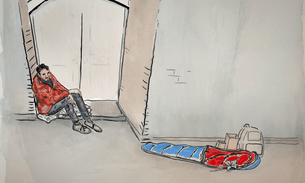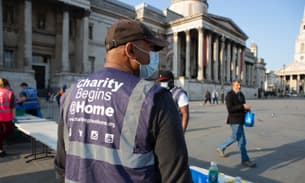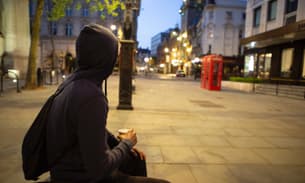
Rough sleepers die in Northampton as night shelter sits half-empty
This story was commissioned as part of the Bureau's Local Reporting Fund - a grant that supports the reporting of untold stories across the UK.
Last winter as temperatures plummeted, a homeless man with learning disabilities found his way to a severe weather emergency facility in Northampton. The cold had already taken effect. The man ended up with such severe frostbite that he had eight toes amputated.
Before getting this emergency care he had tried to gain access to a newly set up night shelter in the town, but was only allowed to stay for one night before being turned away because he had rent arrears at former temporary accommodation.
The facility, ‘Northampton Nightshelter’ was set up by Northampton Borough Council in early 2017 to “keep homeless people safe, warm and dry.” But an investigation by Bureau has found that homeless people have been turned away while there were spaces at the hostel, which was only 52% full on average between November and February. During the same period, seven homeless people died.
Since we started reporting in April, another five Northampton-based homeless people have died. All these deaths were of people registered with Northampton-based homeless charities, though two of them were not in the town at the time of their death.
This comes at the same time as Northamptonshire County Council is in financial crisis, planning to drastically cut all services, including those for vulnerable children and adults, in order to meet a £70 million shortfall.
Dying Homeless
The Bureau is attempting to count all homeless deaths on UK streets. Since we began the project last October, 132 people have died.
Find out moreCoroner's warning
Before the recent spate of homeless deaths, there was the case of Vadims Aleksejevs. Back in November 2016, the 31 year-old was found face down in a makeshift campsite in the town, where a group of homeless people had been sleeping in tents. A little after 10am that day, he was pronounced dead by paramedics.
A coroner's report into Vadims' death - written in March 2017 - concluded that the cause was the cold weather conditions he'd been sleeping in, combined with drug and alcohol use, and warned that there was a risk of similar deaths occurring.
Assistant Coroner Hassan Shah wrote in his report: “In my opinion, there is a risk that future deaths could occur... Action should be taken to prevent future deaths and I believe your organisation has the power to take such action.”
The council did take action. A new shelter, taking up to 20 occupants, was set up as one of the top priorities in the council’s “ambitious, multi-agency” Rough Sleepers Strategy, published in June 2016. Councillor Stephen Hibbert, cabinet member for housing and wellbeing, said at the time: “Our aim is to end the need for people to sleep rough in Northampton. The opening of the Nightshelter takes us a big step closer to achieving that aim."
Tough criteria
The shelter works well for those who can get access. It's a bright and positive environment: when the Bureau visited, hot lasagne was dished up and cups of tea and coffee were handed out. While some went straight to bed after eating, others sat up with staff doing puzzles and playing chess. There is also support and advice available on housing options and access to training courses.
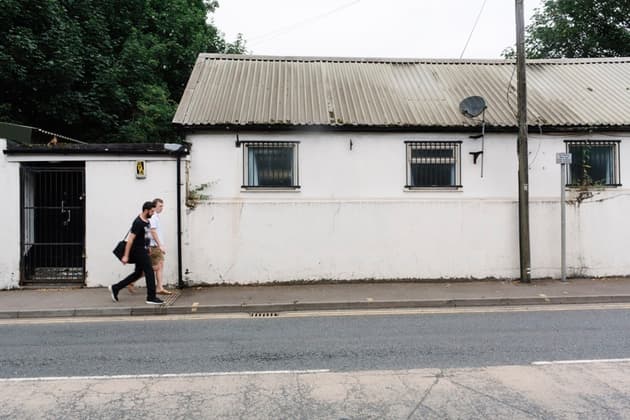 The Northampton Nightshelter
Alex Sturrock
The Northampton Nightshelter
Alex Sturrock
But there are concerns that the criteria for entry may be too strict and that more needs to be done for those who are turned away.
“John *”, who sleeps rough in the town, said he had stayed in the shelter before but that trying to get back in had proved difficult.
“I've been trying to get in for six months now. They keep saying they'll let me know by the end of the day and then I don't see them for a couple of weeks. It's the same again, the same again, I've just given up.”
The council told us it "strongly disputes this man's claim that he has been waiting six months for a decision on whether he can return to the Nightshelter. Decisions are normally made on the day that a Nightshelter Referral is submitted."
Before somebody is granted access to the shelter, a six-page referral form must be completed by an approved agency. Five years of previous addresses must be provided and detailed descriptions of where the person has been sleeping rough have to be given if they are already on the streets. Some people have been refused entry for not completing enough information on these forms. Other key reasons for refusal are not having a connection to the local area, not engaging with local services, or being classed as high-risk.
A local homelessness worker who preferred not to be named told the Bureau the effect of this was to “exclude people with the most challenging behaviours”. He believes “the bar is set very high and accordingly a lot of people don't hit it. It isn't a night shelter in anything other than name. It's a high-threshold controlled-access hostel.”
The council told the Bureau that the "Nightshelter accepts a significant number of people who are likely to, or are very likely to, cause a problem due to their substance misuse, their mental ill-health or their other vulnerabilities."
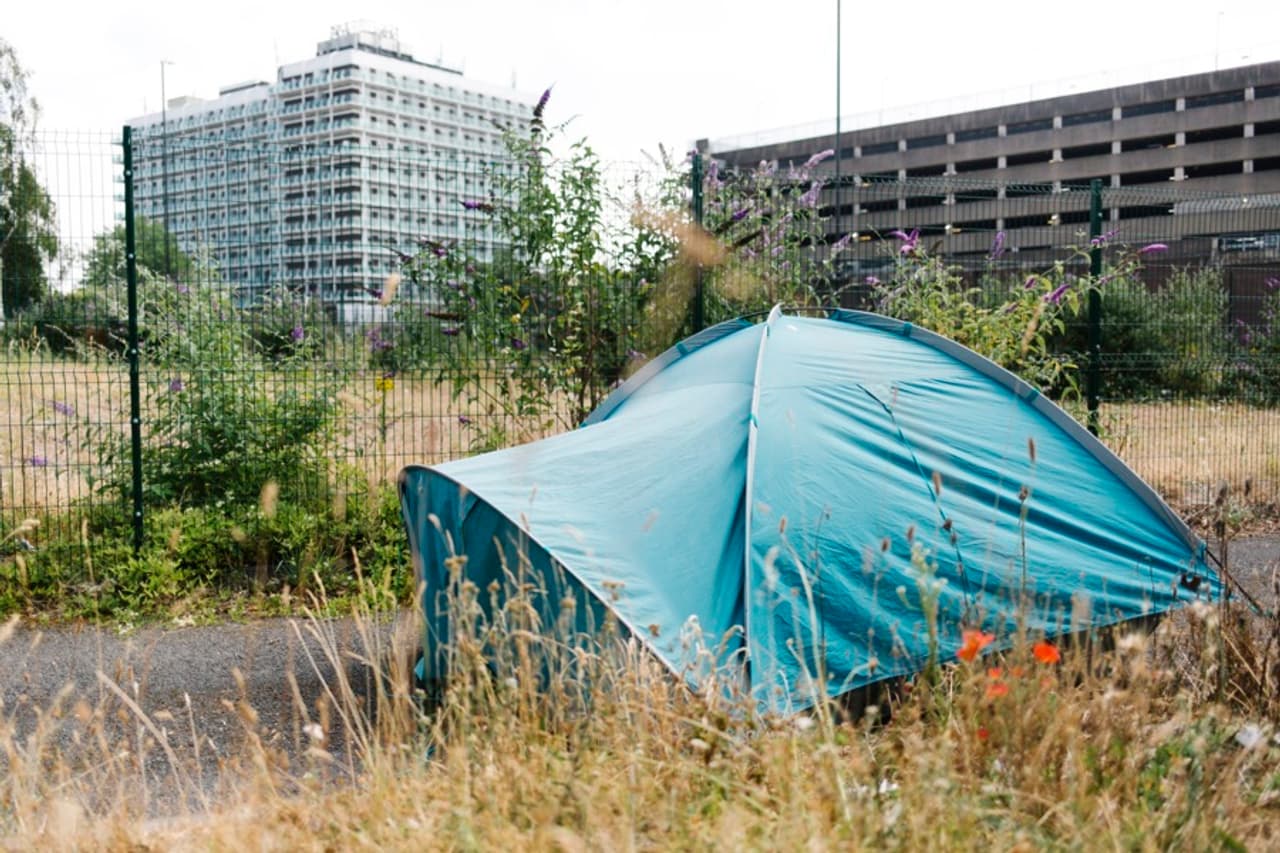
An eastern European problem?
There’s a particular concern among some local organisations about the council’s approach to eastern European rough sleepers.
The council published a multi-agency strategy document on rough sleeping in 2016, which recognised that “almost half” of the town’s rough sleepers were from eastern Europe. The coroner’s report into Vadims Aleksejevs’s death noted that “at the time of the deceased's death there were seven tents containing Latvian, Polish and other nationals.”
Eastern European rough sleepers also seem to have little confidence in the system.
“The local connection rule particularly affects people from eastern Europe,” the homelessness worker told us. He said they “believe there’s no prospect of ever getting housed so why even bother?”
Bridge, a local substance misuse agency, also believes the council’s approach to those without a local connection deters many of them from seeking help.
“They won’t engage with the outreach workers because of the way they are made to feel or because they know there’s no chance they will be helped,” said Vince Carroll, manager of the Bridge.
Father Oliver Coss, the rector of All Saints church in the town centre, told us he had also raised concerns with the council about the lack of provision for rough sleepers who are originally from outside of the country. “It was quite a short conversation,” he said. “Their response was quite dismissive. It seems like it’s the Nightshelter or nothing, but what about those who can’t get into the shelter?”
Phil Harris, the head of housing at the council, told us eastern European rough sleepers were welcome at the shelter if they could prove they had been living in Northampton for six out of the last 12 months.
The council told the Bureau: "The Nightshelter has been used by a total of 45 non-UK nationals who, between them, have stayed a total of 979 nights. These include 22 men from eastern Europe, 9 from western Europe, 11 men from Africa and 3 from other countries."
Other admission issues
Bridge, which is one of the approved referral agencies, said there had also been problems with how referrals are made. The council initially told the agency it would be possible to complete the necessary information online - but this never happened.
Homeless people cannot just turn up at the Northampton Nightshelter; they must first be referred by one of several approved agencies. When these organisations come across somebody sleeping rough who wants to access the shelter they must send over the referral form to the council who will then decide if the person is allowed in.
To the east of Northampton in the small town of Rushden, the Sanctuary night shelter has a more open approach. The only people turned away are those with convictions for arson or sex offences, and people with no recourse to public funds. The Sanctuary doesn’t require homeless people to have established a local connection to the area.
Sanctuary manager, Maria Borg, said: “We don't require much information from people and we give everybody two weeks in the shelter before we expect them to start engaging with support services.”
The King's Arms project in nearby Bedford is also more flexible about who is allowed in. It's a direct access shelter meaning that people can just walk in off the street and it's usually 95% full compared to around half-full in the Northampton shelter.
“Other places manage it, so why can’t they?” said Stan Robertson, who provides breakfasts to rough sleepers in Northampton. “There’s not enough support here, especially for women.”
Hayley - a woman with nowhere to go
The Northampton Nightshelter is only available to men. The council said women were instead fast-tracked into emergency B&B or hotel accommodation while they waited for supported housing. But when the Bureau headed out with Robertson on his morning rounds it was clear that several women were sleeping on the streets.
Twenty-two year-old “Hayley *” was in care as a child; she has bipolar disorder. Robertson has known her since November 2017 and his organisation has previously provided her with new clothes, and even threw her a small birthday celebration. On the morning the Bureau met her she was curled up in an alley, choking on vomit.
After being checked over in hospital that morning, Hayley was later discharged - but with nowhere else to go she just sat in the A&E waiting room trying to decide what to do next.
“I regularly see around seven women out here,” said Robertson as we waited for an ambulance. “If she [Hayley] had access to the Nightshelter maybe this wouldn’t have happened.”
Somebody once threw a concrete slab into Hayley’s tent, he said, and some of the women had told him about being sexually assaulted while sleeping rough.
A few days later when the Bureau met Hayley again she had cuts to her head and ear. She said she was tripped up by some men coming out of a pub the night before.
"I used to be in a hotel while I waited for housing," she said. "But I'm back on the streets. I tried asking [the council] about it again the other day and they told me 'Coming up here all the time isn't going to help you.'"
Harris, the head of housing at the council, said there were plans to open a new shelter for both men and women in the future. The council also told us since February 2017 it had placed 24 women “in emergency B&B or hotel accommodation."
Complaints
During the last year three formal complaints have been made against staff in the council’s housing department (which oversees the Nightshelter). One is pending an investigation, one was closed due to lack of evidence, and one was closed after the staff member in question left.
Several homelessness workers we spoke to said they had concerns about the attitude of some of the staff in Harris’ team, something which was repeated by a number of rough sleepers.
“I attended a meeting with a guy who had just been in hospital for 22 days,” Robertson said. He didn't like how the council had dealt with the man in question. "It was like he had to prove why they should help him,” he claimed.
Others expressed concern that the council had removed the tents of homeless people. “They say they’re there to help but as soon as they find out where your tent is they come and take it,” one local rough sleeper said. “How’s that helping?”
In response, the council told the Bureau: "Tents will only be removed if they have been abandoned, are obstructing the highway or they are posing a risk to community safety."

The Conservative-run council stated in November 2017 that the number of rough sleepers in the town had dropped from an estimated 25 to 13 since the rough sleeping strategy was announced. But there was confusion over these figures locally. Several local volunteers and homeless workers felt the numbers didn't match what appeared to be a visible increase in people sleeping in doorways or in tents.
Just a few months after the count, the council activated its severe weather emergency protocol in conjunction with a local homeless charity Hope Centre. A homelessness day centre opened its doors for several nights in February while temperatures plummeted. Hope Centre said that 36 people had bedded down there in one night alone. This was in addition to the 10 or so who were already in the council-run shelter as well as those who remained outside.
“We’ve never said that figure [of 13] is a true reflection of the number of people sleeping rough," said Harris from the council. “I can categorically say that there was no attempt to not find people. It’s disappointing that organisations have criticised the count without looking at what we’ve actually said.”
Harris believes much of the criticism aimed at the council is unfair and said some local charities were encouraging rough sleepers not to engage with the council’s services and not to use the Nightshelter.
“There’s a constant running down of the council,” he said. “We see these organisations presented in one way but behind the scenes it’s sinister and I’m not paranoid. There are councillors doing regular night shifts at the shelter, I do shifts too. It’s a bit galling being attacked for doing your job, but we have a personal mission to change people’s lives.”
He pointed out that since it opened, 80% of referrals to the shelter have been admitted - and explained that he didn't want the shelter to be full.
“We have 20 spaces but we don’t actually want that occupancy,” he said. “The more people that are there the less effective the service will be.”
The council said in a statement: "We think it is disingenuous of the Bureau to imply that some homeless people would not have died if they had been provided with accommodation in the Nightshelter."
The council also stressed that the Nightshelter had had many successful "guests", with more than 120 moved on in a planned way, and with over 4,700 overnight stays in the shelter from its opening until May 2018.
Robertson has a different view. “The Nightshelter is never full but every night people are sleeping on the streets,” he said. “How can that be right?”
As for Hayley, she says she feels forgotten by the local authority.
“They know I’m out here, but nobody comes to help. They won’t even give me a chance, I can’t cope out here. All I want is somewhere to live.”
* names have been changed


